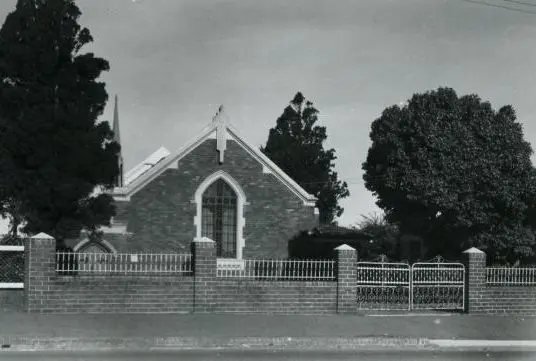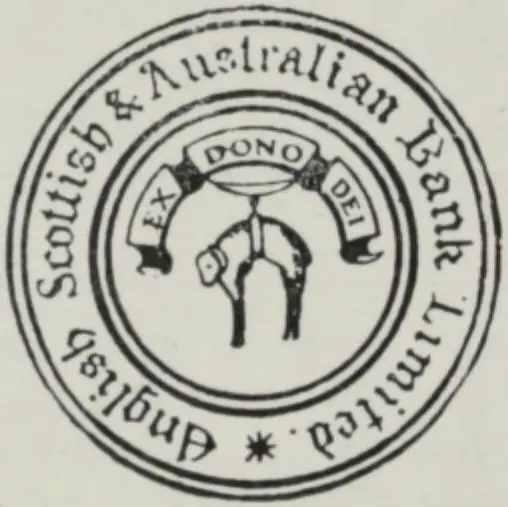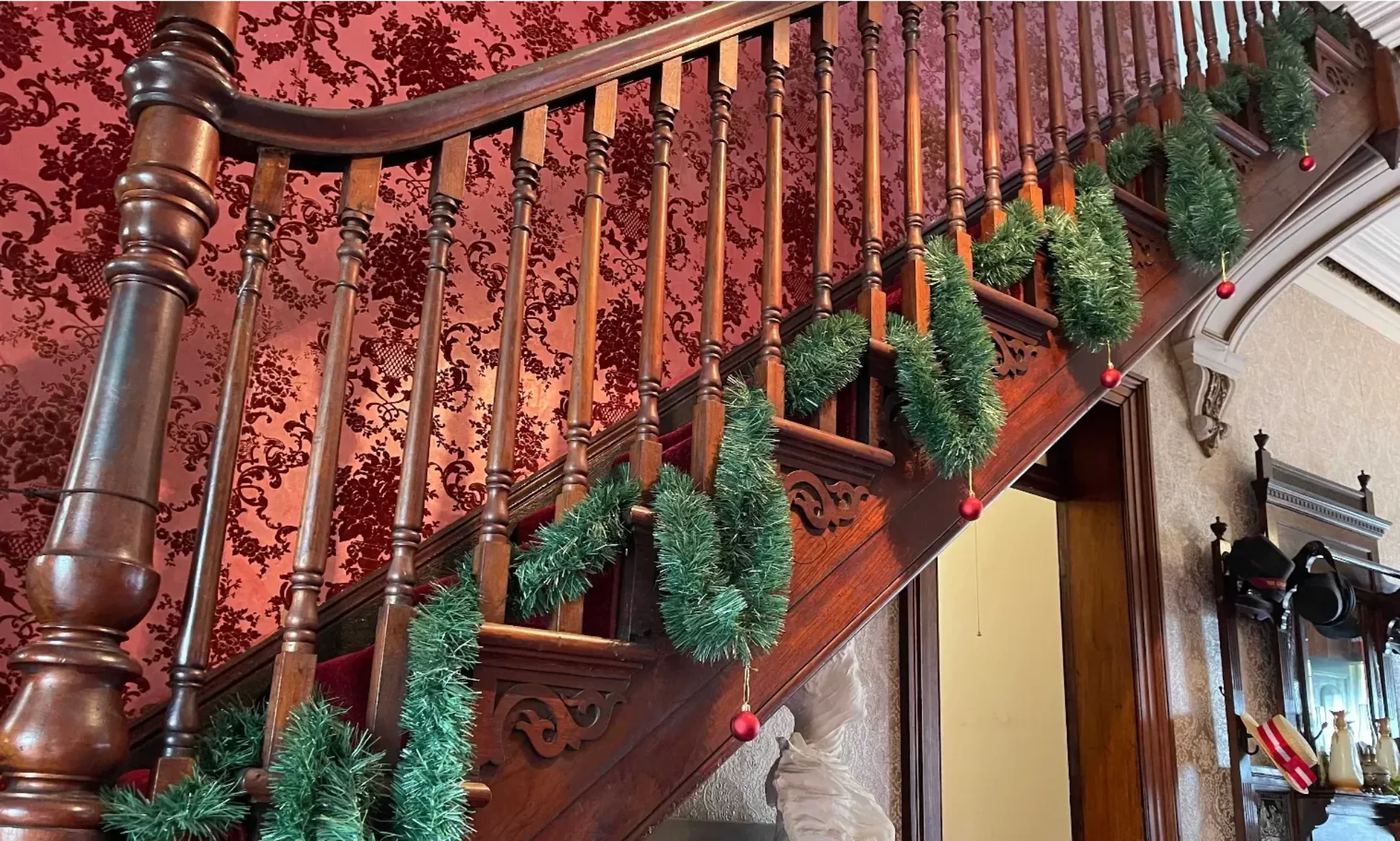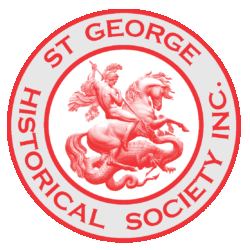On 28 November 1885 a group of interested residents held a meeting to form the Trust and take steps towards the erection of the West Botany St. Wesleyan Church. The first five meetings were held in the Rockdale Sunday School rooms.
Mr Fooks generously gave the building site and after calling tenders, that of Messrs. E & J Godfrey for £497 was accepted. The first service was held on 30 May 1886 followed by a public tea the following Wednesday. Tickets were 1 shilling, sixpence for adults and a shilling for children under 12. The practice of holding an anniversary service and tea meeting continued for many years. And so the West Botany St. Wesleyan Church came into being, serving the spiritual needs of a small semi-rural community, mostly of pioneering stock settled on the arable but swampy farm lands located midway between the now populous suburbs of Rockdale and Brighton-Le-Sands.
In their far-sighted wisdom the original trustees set their new church well back from the street alignment, thus making provision for additions, if and when required.
The depression of the early 1890s played havoc with the finances of the church, whilst at the same time the white ants played havoc with the floor joists and timbers. It was decided to relay the floor and saturate the ground beneath with carbolic acid as a deterrent to further termite attack. This work was carried out in 1893 by Eli Godfrey at a total cost of £10.3.6. As there were no funds the trustees paid from their own pockets. The financial position improved during the following year, so the organ underwent urgently needed repairs. In May 1895, gas was introduced to the district and the trustees decided to connect the church for better lighting, at a cost of pounds £18.15.0.
One cannot but admire the tenacity of purpose of the comparatively few adherents of the church in their endeavour to maintain their property in good repair. It was an uphill battle, but they all felt that their Christian purpose was well worth fighting for.
About September 1896 considerable discussions took place as to the advisability of forming a union with other churches which followed principles close to the Wesleyan faith. However, it was 1901 before Union was implemented, and the West Botany St. Wesleyan Church became known as the West Botany St. Methodist Church.

As the Golden Jubilee of the Church was fast approaching (1930s), it was decided to erect a new church building and attach it to the existing one. Charles Gray’s tender for £1,100.0.0. was accepted the dedication took place on 2 May 1936. The special ceremony of opening the new entrance door was an honour bestowed on Lily Bowmer. The two buildings were connected with folding doors, which were opened for special occasions to make more seating accommodation.
As the years passed, the trustees and congregation realised the need for new Sunday School premises. The main hall was inadequate for their various needs, whilst the kitchen and office accommodation left much to be desired. The old weatherboard kindergarten hail had been ravaged by white ants and had become an eyesore.
It was decided that some form of improvement should be undertaken as early as possible; so the Parents & Friends’ Association, Ladies Church Aid and other organisations began raising funds, which were augmented by church anniversary appeals.
By June 1962 the sum of £2,631.0.0. was in hand and the trustees were now thinking in terms of a new hall and the renovation of the former hail, a scheme that would involve the expenditure of many thousands of pounds. Accordingly, a canvass was undertaken and after almost 3 years the income from this, together with donations, lifted finances to a satisfactory position for the work to begin. During this period, plans were prepared by Messrs. Brown & Mowbray, providing for a large hall and stage with 2 dressing rooms, a modern kitchen, office and storage space below the stage, and for the old hail to be modernised for kindergarten purposes with new furnishings throughout.
Special mention should be made of the Parents & Friends’ Association who by their catering efforts raised well over £1,000.0.0 and the other organisations who worked very hard.

The tender of H. N. Barton of Strathfield was accepted for £14,125.0.0. This together with architects’ fees, interest on the bank loan, and furnishings finally amounted to a cost of $35,413.64. The hall was opened and dedicated on 7 August 1965 by Rev. S. M. Barrett, Secretary of Methodist Conference and President elect. The final payment on the hall was made to the English, Scottish & Australian Bank on 4 July 1969. A wonderful effort by all. (Ed: The bank merged with Australia and New Zealand Bank (ANZ) the following year)
It had always been a community-neighbourhood church, and from then on saw a gradual decline in numbers as young people married and moved away. Some older folk, too, either left the district or passed on, and there were no new families coming into the church.
This trend continued until late 1980, when a decision was made for the Sunday School to join with the Rockdale Sunday School and for the congregation to join with Rockdale for worship services from February 1981, but still maintaining their identity and the West Botany St. property.
Now the time has come, from January 1982, for the joining of the Congregations, with the Parish Council taking care of the property until some satisfactory use or sale is found for it.
Although West Botany St. has always been essentially a neighbourhood Church, its influence has spread far and wide and there are many from different localities and varied walks of life who look back in gratitude to the days at West Botany St. when they first came to know of the love of God in Christ Jesus.
As we come to the time for the closing of this centre of worship, we give praise and thanks to Almighty God for the privilege of witnessing in this corner of His vineyard over a period of 96 years. We pray that this witness may continue and grow in the lives of members, both past and present, to the honour and glory of our Lord Jesus Christ.
This article was first published in the February 1982 edition of our magazine.
Browse the magazine archive.
Unless noted, images courtesy of the Bayside Library Service Local History Collection.

